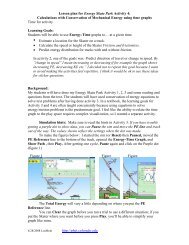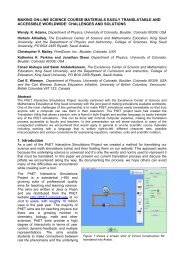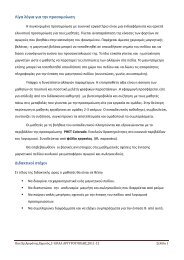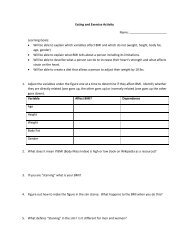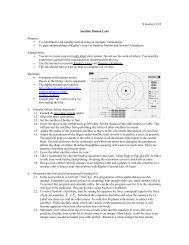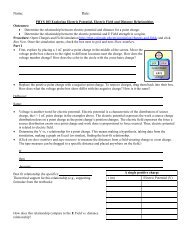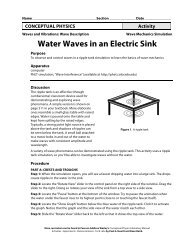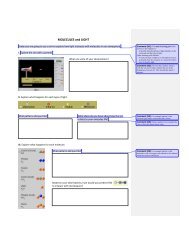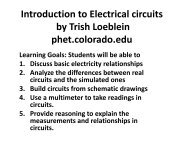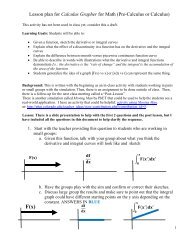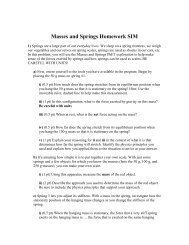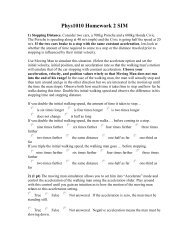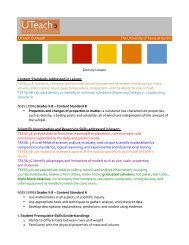LAB #2: Fun with DC Circuits - PhET
LAB #2: Fun with DC Circuits - PhET
LAB #2: Fun with DC Circuits - PhET
Create successful ePaper yourself
Turn your PDF publications into a flip-book with our unique Google optimized e-Paper software.
Construction Kit (CCK) Simulation:With the CCK you can quickly build and explore any circuit you want!You will be using laptop computers at your stations. When the simulation is started you are ready buildyour own circuits. Click and drag the icons (batteries, bulbs, resistors, etc) into the workspace. Thewires are automatically soldered (connected) together by touching the round ends. To decouple themright click. To change the values of the components, right click. You can look at things in a schematicview or a life-like viewIt comes <strong>with</strong>:• batteries <strong>with</strong> adjustable voltages• light bulbs <strong>with</strong> adjustable resistance• resistors <strong>with</strong> adjustable resistance• switches• wires• a volt meter which like the DMM can measure voltage differences betweenany two points in your circuit.• and, a current meterHelpful hints:• right click on junctions to disconnect• right click on components to view your options.•You cannot break the CCK, so go for it!PART I: UNDERSTANDING RESISTANCEYour goal of this part of the lab is the following: Figure out how to measure theresistance of various things using the tools in the CCK.In your play area select 5 resistors and adjust their values to be: one 1Ω, one 4Ω, two 50Ω, and one 100Ω. Add two light bulbs to your play area and adjust their resistance to be25Ω each.It is up to your lab group to create 2 different resistor combinations using some of the 5resistors and 2 light bulbs —both in series and in parallel. Draw a picture of each comboof resistors in your lab book, and predict the equivalent resistance of that combo. Buildthese resistor combinations in the CCK, and test your prediction by building anothersingle-resistor circuit <strong>with</strong> the equivalent resistance (<strong>with</strong>in 1Ω) and comparing the two.Do your two circuits have equivalent resistance? How can you tell?PART II: CIRCUIT BEHAVIORNow that you understand how to use the DMM, you will now use CCK to build a circuit andinvestigate its behavior.Using CCK, construct the circuit shown below, consisting of two light bulbs in series <strong>with</strong>the power supply (battery). (The resistor R will be added later). Slowly increase thebattery voltage until the bulbs are glowing, but not too bright. Predict what will happen tothe brightness of the bulbs when you place a R = 50Ω resistor in parallel <strong>with</strong> bulb <strong>#2</strong> as4



